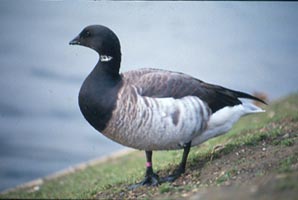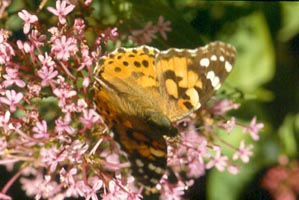| Dalkey Tidy Towns |
  |
| Dalkey Tidy Towns |
  |
Wildlife
Newsletter for the Township of Dalkey September 2006 - Michael Ryan |
One
of the best way of seeing birds, and helping them survive, is to have them
coming to visit your garden or, more specifically, coming to your garden
to feed. This can be achieved by either leaving out specific food for them
on a bird table or in feeders or growing plants, flowers or trees that will
provide natural food for them through the insects that live on the plants
or from the berries or seed that grow on them. Water either in bird baths
or ponds (or even in upturned dustbin lids) is essential for the birds all
the year round for drinking or for washing. Birds wash to keep their plumage
clean, un-matted and functioning properly in flight. Many of us leave out
apples in the autumn and winter when they’re much appreciated by Blackbirds,
Blue and Great Tits and Blackcaps. Blackcaps were once only summer migrants
from southern Europe or Africa but they have modified their migration habits
and many birds now overwinter in Ireland and Britain where milder winters
and abundant food provided in gardens saves them the long hazardous trip
south. They love apples but also take peanuts and a friend who feeds birds
in his garden told me they are very partial to mashed potato! Apples are
generally considered a winter food for birds so when I left some out on the
feeders in the middle of our heatwave in July I wasn’t expecting much
uptake. I loop old wire clotheshangers over branches with the hook end at
the bottom on which I place the sliced apples. Within hours there were Blue
tits clinging on to them and pecking away and soon after I saw a Blackbird
perched awkwardly on one, feasting away. There’s every chance it was
due to the heat and the birds were getting moisture from the fruit and soon
after I saw a female blackcap and three blackbirds taking berries from a
Leycestaria bush. This bush is more commonly known as the Pheasant Berry
bush and it was imported and grown specially to feed pheasants. It is an
attractive bush with cascades of deep maroon and white flowers which contain
purple berries. I can not remember when this bush first appeared in my garden,
I have heard that someone used breed Pheasants and release them in Dalkey
Quarry and sowed these plants to feed them, but now it’s growing everywhere
in my garden in borders, through the leylandii hedge and in every available
flowerpot, in fact anywhere a bird might perch and relieve itself. A very
good demonstration of the effectiveness of birds in dispensing seed. Sometimes
I think of cutting the Leycestaria bushes back since they grow a bit too
vigorously but then they redeem themselves when I see male and female blackcaps,
bullfinches and blackbirds feeding on them in winter. |